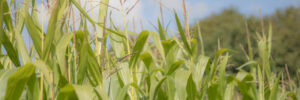The hidden risks in our beverages
The increasing complexity of production chains and the widespread use of synthetic polymers in food contact materials have raised significant concerns about plastic contamination in food and beverages1. But knowledge about the presence of these contaminants as well as their long-term toxicological effects on human health remains limited. Alcoholic beverages, particularly those with high ethanol content, are of specific concern due to their increased affinity for nonpolar contaminants from packaging materials. Additionally, these products are often stored for extended periods, further increasing the risk of contamination2.
Among these compounds, phthalates and bisphenols—commonly used as plasticizers—are of particular concern. Chemicals like bisphenol A (BPA) and certain phthalates (e.g., DEHP, DBP) have been associated with developmental issues, reproductive toxicity, and various health problems3,4. For alcoholic beverages, these risks are heightened due to the high ethanol content, which increases the affinity for non-polar leachables and compounds that might migrate from packaging materials2.
Beyond the usual suspects: The need for non-targeted analysis
Traditional targeted analysis, while valuable, focuses on searching for specific, known compounds. However, synthetic polymers used in packaging and production materials may contain contaminants known as non-intentionally added substances (NIAS), which can migrate into food and beverages5. Conventional targeted analytical methods may not efficiently detect these substances. Thus, a non-targeted approach is crucial for uncovering both known and unknown contaminants.
Researchers at McGill University, Canada, developed a non-targeted UHPLC-QTOF-MS method, for investigating suspected and unanticipated chemicals in a variety of 37 liquor samples in various types of packaging (plastic as well as glass)6.
Suspect screening: many phthalates, no bisphenols
Using targeted screening the researchers have found DEHP and DEHA as the most prevalent contaminants, which have also been identified as the most frequently detected phthalates in food samples overall by a recent study2. Interestingly, several of the liquor samples with the highest levels of phthalates were found in glass rather than plastic packaging. This suggests that product type and production process seem to play a more crucial role for the contaminant profile than the type of packaging. Overall, the phthalate levels detected across all liquor samples were below the specific migration limits set by European Union regulations for individual phthalates and the total sum of phthalates. Notably, no bisphenols were detected in any of the tested liquor products.
SIRIUS for chemical identification of unknowns
In their non-targeted approach, the researchers are using MassHunter Profinder (Agilent Technologies) to screen the Extractables and Leachables PCDL library (Agilent Technologies). This database contains information about numerous chemicals commonly found as contaminants in food and drinks. Profinder flagged potential contaminants in the samples by matching their exact mass and isotopic patterns with entries in the database. However, relying solely on mass and isotopic patterns for identification can be misleading. Compounds with identical chemical formulas in the database highlight the need for fragmentation data for precise identification. By analysing the fragmentation pattern, SIRIUS can predict the most probable chemical structure of an unknown contaminant. SIRIUS demonstrated high accuracy in identifying the majority of the targeted compounds and provided correct chemical formulas for key substances (e.g., DEHA, DEHP, BBzP, BPA, BPS, BPF) confirming its utility as a reliable tool for non-targeted analysis.
Uncovering unexpected contaminants
In the analysis, about 2800 features were reported. The most abundant compounds in negative mode were mostly organic acids, which could either be linked to plastic contamination or be naturally occurring components in alcoholic beverages7. In positive mode, several features were identified as phthalates. While some of these phthalates, such as dibutyl adipate and dioctyl phthalate, may be associated with plastic contamination, others, like vanillin and ethylvanillin, could be natural ingredients or intentionally added as flavorings in the alcohol.
Some of the identifications, e.g. liquiritigenin, ethylvanillin, and ethylparaben, were confirmed using analytical standards. Ethylvanillin and ethylparaben share the same molecular formula, making it difficult for Profinder to differentiate between them, but SIRIUS was able to successfully distinguish the two. Though neither compound occurs naturally, both are present in the Extractables and Leachables database and might be linked to plastics, but they are also approved as additives. Ethylvanillin is a common flavoring agent8, and ethylparaben is used as an antimicrobial preservative. Liquiritigenin, derived from licorice species such as Glycyrrhiza glabra, was detected in pastis liquors, likely due to the use of herbal extracts9.
Enhancing food safety: The power of non-targeted analysis
Non-targeted analysis with SIRIUS is a powerful, high-accuracy tool for identifying contaminants in food and beverages, enhancing food safety and public health. This study identified three additional compounds outside its original scope, demonstrating the effectiveness of this approach. Unlike targeted analysis, which focuses on specific compounds, non-targeted analysis enables the detection of a broader range of chemicals, including unexpected contaminants.
References
- 1.Muncke J, Myers JP, Scheringer M, Porta M. Food packaging and migration of food contact materials: will epidemiologists rise to the neotoxic challenge? J Epidemiol Community Health. Published online February 19, 2014:592-594. doi:10.1136/jech-2013-202593
- 2.Chatonnet P, Boutou S, Plana A. Contamination of wines and spirits by phthalates: types of contaminants present, contamination sources and means of prevention. Food Additives & Contaminants: Part A. Published online August 7, 2014:1605-1615. doi:10.1080/19440049.2014.941947
- 3.Cao X. Phthalate Esters in Foods: Sources, Occurrence, and Analytical Methods. Comp Rev Food Sci Food Safe. Published online December 21, 2009:21-43. doi:10.1111/j.1541-4337.2009.00093.x
- 4.Fasano E, Bono-Blay F, Cirillo T, Montuori P, Lacorte S. Migration of phthalates, alkylphenols, bisphenol A and di(2-ethylhexyl)adipate from food packaging. Food Control. Published online September 2012:132-138. doi:10.1016/j.foodcont.2012.03.005
- 5.Geueke B. FPF Dossier: Non-intentionally added substances (NIAS), 2nd edition. Published online June 12, 2018. doi:10.5281/ZENODO.1265331
- 6.He N, Yargeau V, Liu L, Bayen S. Development of a targeted and non-targeted direct-injection analysis of plastic-related contaminants in liquor products. Food Control. Published online August 2024:110424. doi:10.1016/j.foodcont.2024.110424
- 7.Miao Z, Hao H, Yan R, et al. Individualization of Chinese alcoholic beverages: Feasibility towards a regulation of organic acids. LWT. Published online December 2022:114168. doi:10.1016/j.lwt.2022.114168
- 8.Elbashir AA, Elgack Elgorashe RE, Alnajjar AO, Aboul‐Enein HY. Capillary electrophoresis method for simultaneous analysis of caffeine, vanillin and ethyl vanillin in beverages. Separation Science Plus. Published online April 12, 2021:266-272. doi:10.1002/sscp.202100001
- 9.Husain I, Bala K, Khan IA, Khan SI. A review on phytochemicals, pharmacological activities, drug interactions, and associated toxicities of licorice (Glycyrrhizasp.). Food Frontiers. Published online August 31, 2021:449-485. doi:10.1002/fft2.110








